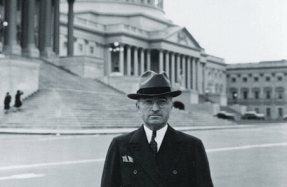THE NIGHT DIPPERS


ON JUNE 30, 1960, I ATTENDED A SMALL CEREMONY WHERE I RECEIVED MY U.S. NAVY WINGS OF GOLD AFTER 18 MONTHS OF TRAINING. IT WAS A JOYFUL EXPERIENCE FOLLOWING MONTHS OF STRESS AND ANXIETY AS I STUMBLED THROUGH THE MANY TRAINING PHASES AND WATCHED FRIENDS FALL TO THE DEMANDS OF THE INTENSIVE CURRICULUM.
I was a lucky one who survived. Very lucky.
In 1959 the Navy had not yet developed a discrete program to train helicopter pilots. “Real” pilots flew airplanes. During training we flew North American T-28s and Beechcraft T-34s through a full curriculum of aerobatics, formation, instrument flying, cross-country navigation and gunnery before moving on to multiengine instruction in the Beechcraft SNB (C-45) and finally to three months of helicopter training.
I was subsequently assigned to Helicopter Anti-Submarine Squadron 5 (HS-5) at Quonset Point, R.I., flying the Sikorsky HSS-1 Seabat. The 14,000-pound HSS-1 (redesignated the SH-34G in 1962) was a large helicopter for the time, powered by a 1,525-hp Wright R-1820 radial engine. The Wright Cyclone had been successful in several World War II airplane applications but it was not very reliable in the HSS series, as it ran
You’re reading a preview, subscribe to read more.
Start your free 30 days





